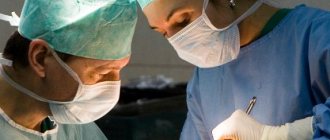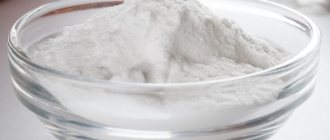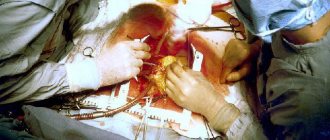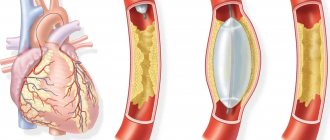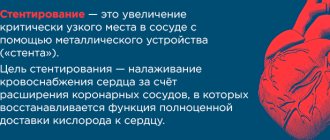Reasons for curettage
Curettage is performed for therapeutic and diagnostic purposes. During the operation, only the superficial mucous layer is removed, due to which the organ is restored quite quickly. In this case, pain appears in the first hours after curettage. Over time, they become less pronounced and disappear completely.
For therapeutic purposes, surgery is performed to remove polyps, the remains of the embryo after spontaneous abortion and if cancer is suspected. Abortions are often performed this way. In addition, indications for cleaning are frozen pregnancy, symptoms of endometritis and severe uterine bleeding.
Curettage is prescribed for endometrial hyperplasia. The cause of this pathology is hormonal imbalance. The danger of the disease lies in the fact that there is a risk of cells degenerating into malignant ones. When it develops, separate diagnostic curettage is performed.
Tissues obtained during the operation are sent to a histology laboratory to exclude oncology.
Pain after gynecological interventions
Curettage of the uterine cavity is used in gynecological practice for various purposes. Most often, this operation is performed to terminate a pregnancy.
But there are also other types of these manipulations. For many women, pain after gynecological surgery may appear several days later.
Many cases are associated with psychological problems that are based on a misunderstanding of the essence of this intervention. Therefore, it is important to understand what curettage is and why it can be carried out.
Separate diagnostic is used in cases where it is necessary to take histological material from the cavity of the cervix and the uterus itself. In this case, the gynecologist, on an outpatient basis, takes a small piece of mucous tissue from the cervical canal and from the uterine cavity.
If the equipment allows, the operation is performed under hysteroscopic control. A hysteroscope is inserted into the uterus, which allows you to see the area of treatment and the manipulations being performed.
This is the safest method for diagnosing and removing polyps and tumors. In this case, the risk of unintentional damage and the possibility of unwanted tissue remains is minimized.
Curettage after abortion
The reasons for removing the endometrial layer are spontaneous miscarriage and complications after abortion. Such manipulations are necessary in cases where embryo particles remain in the organ.
After cleaning the uterus, a woman notes that she has pain in her lower back, as well as her lower abdomen, and spotting appears. They will be observed until the process of restoration of the cervix and the reproductive organ itself is completely completed. Sometimes the temperature rises after curettage. With such changes, doctors prescribe antibiotics. With their help, it is possible to prevent the development of inflammation.
Recovery period
Curettage is a simple surgical procedure. Despite this, in the first days after cleansing the patient may experience pain of varying intensity in the lower abdomen. For some women, the pain is dull. While other representatives experience cramping severe pain spreading to the lower abdomen and back. If such pain is the only symptom, the woman is advised to use painkillers. As a rule, she is prescribed drugs that relieve spasms. The duration of pain varies from several days to seven to ten days.
Resumption of menstruation
Regulations after cleaning the uterus appear after 4–5 weeks. The timing largely depends on the general condition of the body and the speed of recovery of the cervix and endometrium. After abortion, there is often a delay. This is due to the fact that in this case it takes a little more time to restore reproductive function.
The menstrual cycle is fully restored after curettage only after three months. In some cases, this takes about six months. In the first few months, intense contractions of the uterus lead to pain during menstruation. Regula often become scarce or excessively abundant.
Changes that should alert you include severe abdominal pain, acyclic bleeding, and an increase in body temperature. In this case, postponing a visit to the doctor is strictly prohibited. A reason to visit a gynecologist is also a prolonged absence of menstruation.
Indications for curettage
Most often, curettage is performed for diagnosis or to eliminate bleeding in the uterus.
The operation is performed in cases where there is abnormal bleeding that is not characteristic of the natural course of events: in the period between menstruation, if menstruation is too heavy, when bleeding occurs during menopause, etc. Also, using curettage, polyps, small formations in the lining of the uterus, are removed. In addition, abnormal bleeding can signal the development of cancerous tumors in the uterus, so with the help of curettage it is possible to prevent cancer. Doctors also prescribe curettage surgery if an incomplete spontaneous abortion has occurred to remove remaining placental fragments. This occurs in a hospital setting, general anesthesia is used, and less commonly, local anesthesia is used for outpatient treatment.
The nature of the discharge after cleaning
The appearance of bloody discharge after curettage is normal. This is due to damage to small vessels in the organ cavity. Due to contraction of the uterus, they may be accompanied by pain. Often, women experience tightness in their lower abdomen during this period. Bleeding should stop after a maximum of ten days.
Scarce
Heavy vaginal discharge is observed for several days. Normally they are odorless. You may also experience pain after hysteroscopy.
After a while, the nature of the discharge becomes scanty, then it stops completely.
The initial appearance of spotting or a sharp decrease in blood volume should alert you. Such symptoms often indicate the development of complications.
Yellowish thick
Normally, women experience brown discharge after curettage of the uterus. The duration of bleeding does not exceed ten days. Thick, yellowish discharge from the uterus and nagging pain are alarming symptoms. They often indicate the penetration of infection into the reproductive organ and the onset of the inflammatory process.
Bloody
Contraction of the uterus as a result of excision of its mucous layer leads to pain in the lower abdomen after curettage and bloody discharge from the vagina. This is a normal condition that will soon pass.
Heavy bleeding should be a concern. Sometimes it is accompanied by itching and an unpleasant odor. Such changes indicate the development of complications. You should seek help from a doctor without delay.
No discharge
Discharge is normal after cleaning the uterus and removing its mucous layer. If they are absent, then most likely there is a barrier to the normal outflow of blood, which begins to accumulate in the reproductive organ. This condition is dangerous. It is imperative to consult a doctor and conduct a full diagnosis.
Causes of pain
Cleaning is a relatively safe procedure in gynecology, which is rarely complicated by undesirable consequences. However, after cleaning, many patients note the occurrence of pain, which is localized in the lower abdomen.
If the lower abdomen hurts slightly, this sign is normal. In this case, the pain that covers the lower abdomen is associated with the surgical intervention performed.
However, there are certain situations in which intense pain can affect not only the lower abdomen. In addition to the characteristic pain in the lower abdomen, symptoms of more dangerous complications may appear.
Causes of pain in the lower abdomen.
- Perforation of the uterine cavity. Perforation is a puncture of a muscle organ. This complication occurs when manipulating gynecological instruments. This is due to the complexity of the curettage procedure and the possible looseness of the organ walls, which appears during inflammatory processes. As a rule, this phenomenon causes pain in the lower abdomen. For small punctures, observation and conservative therapy are necessary. If the perforation is significant, surgical intervention and subsequent repair of the defect are necessary.
- Tear of the cervical part of the uterus. This phenomenon can occur with the laxity that characterizes the cervix. As a result, the forceps are not secured tightly enough, which sometimes leads to injury to the organ. Minor injuries heal over time. Significant tears require sutures. With a tear observed in the cervix, the patient may also be bothered by pain in the lower abdomen and the vaginal and perineal area.
- Inflammatory process in the uterine cavity. The development of inflammation is possible in the presence of a chronic source of infection or in case of violation of antiseptic rules. Inflammation and subsequent pain in the lower abdomen and back may appear if antibacterial drugs are not taken after curettage. Inflammation also provokes weakening of the immune system due to surgery. If the inflammatory process has affected the area of the appendages, the woman experiences quite severe cutting pain that spreads to the lower abdomen. Often the general condition worsens, and the cycle undergoes changes. During menstrual periods, discharge becomes abundant or, conversely, scanty, there is no ovulation, and the woman feels constant discomfort and aching pain in the lower abdomen. In such a situation, mandatory use of antibacterial agents is indicated.
- Hematometra. A complication occurs when blood accumulates in the uterine cavity after cleaning. Hematometra occurs due to spasm of the cervical region, which prevents blood from flowing out of the uterine cavity naturally. Over time, an infection develops, which is accompanied by pain in the lower abdomen. The patient is prescribed conservative therapy, and if necessary, repeated curettage is performed.
- mechanical trauma to the mucous membrane. This phenomenon involves excessive curettage, which usually occurs when the manipulation is performed by an inexperienced doctor. As a result, the basal or germinal layer, which ensures the growth of the endometrium, is damaged.
When cleaning, only the functional layer is removed, which then, with adequate functioning of the germ layer, grows again. With inaccurate and aggressive scraping, the structure of the mucous layer can be disrupted and an inflammatory process can form.
If curettage of the uterine cavity is carried out correctly, there should be no consequences in the form of pain and inflammation in the abdomen. In some cases, incomplete removal of tumors is possible in the absence of hysteroscopy, which leads to repeated cleaning.
The most “harmless” reason why lower back pain may appear after an abortion is a violation of the regime. Unpleasant sensations can occur due to playing sports or lifting weights.
Mild nagging pain in the back after an abortion is considered normal. This is explained by contraction of the uterus after termination of pregnancy.
Pain in the back and lower back can be explained not only by physiological reasons. There are cases when parts of the fertilized egg remain in the uterus. These residues become the cause of infection in the body.
They prevent the uterus from contracting, so a woman may be tormented by severe growing pain in the abdomen, radiating to the lower back and sacrum, and copious (sometimes heterogeneous) discharge.
This situation can arise both during a surgical abortion, when the doctor blindly scrapes out the wall of the uterus, and during a medical abortion (in the case of an incorrectly selected dose of the drug).
— separate (first curettage of the cervical canal, then the uterine cavity)
- treated-diagnostic - the resulting scraping will be sent for histological examination, which will allow an accurate diagnosis to be made, “treated” - since in the process of curettage, the formation (polyp, hyperplasia) for which it was prescribed is usually removed.
- scraping - description of the process.
persistent abdominal pain or cramping, heavy bleeding, weakness, dizziness, unusual or foul-smelling vaginal discharge, consult a doctor immediately.
— Perforation of the uterus - the uterus can be perforated with any of the instruments used, but most often it is perforated with a probe or dilators. Two reasons: the cervix is very difficult to dilate and excess pressure on the dilator or probe causes it to pierce the uterus;
- Inflammation of the uterus - this occurs if curettage was performed against the background of inflammation, the requirements of septic and antiseptics were violated, and a prophylactic course of antibiotics was not prescribed. Treatment: antibacterial therapy.
- Hematometra - accumulation of blood in the uterine cavity. If, after curettage, a spasm of the cervix occurs, blood, which normally should flow from the uterine cavity for several days, accumulates in it and can become infected and cause pain. Treatment: drug therapy, bougienage of the cervical canal (spasm relief)
— Damage to the mucous membrane (excessive scraping) – if you scrape very hard and aggressively, you can damage the germ layer of the mucous membrane, which will lead to the fact that the new mucous membrane will no longer grow. A very bad complication - practically untreatable.
Do you experience pain after curettage? Do you want to know more detailed information or do you need an inspection? You can make an appointment with Doctor Eurolab is always at your service!
The best doctors will examine you, study external signs and help you identify the disease by symptoms, advise you and provide the necessary assistance. You can also call a doctor at home. The Eurolab clinic is open for you around the clock.
The telephone number of our clinic in Kyiv: ( 3 (multi-channel). The clinic secretary will select a convenient day and time for you to visit the doctor. Our coordinates and directions are listed here. Look in more detail about all the clinic’s services on its personal page.
If you have previously performed any tests, be sure to take their results to a consultation with your doctor. If the studies have not been performed, we will do everything necessary in our clinic or with our colleagues in other clinics.
Does your body hurt after curettage? It is necessary to take a very careful approach to your overall health. People do not pay enough attention to the symptoms of diseases and do not realize that these diseases can be life-threatening.
There are many diseases that at first do not manifest themselves in our body, but in the end it turns out that, unfortunately, it is too late to treat them.
Each disease has its own specific signs, characteristic external manifestations - the so-called symptoms of the disease. Identifying symptoms is the first step in diagnosing diseases in general.
To do this, you simply need to undergo examination by a doctor several times a year in order not only to prevent a terrible disease, but also to maintain a healthy spirit in the body and the organism as a whole.
If you want to see a doctor, use the online consultation section, perhaps you will find answers to your questions there and read tips on caring for yourself.
If you are interested in reviews about clinics and doctors, try to find the information you need on the forum. Also register on the Eurolab medical portal to be constantly aware of the latest news and information updates on the site, which will be automatically sent to you by email.
Curettage is a safe operation when performed by an experienced specialist. Complications after it are rare. Let's list the most common ones.
- Perforation of the uterus - the uterus is usually perforated using any instrument designed for this purpose, usually a probe or dilators. There are several reasons for this. Firstly, one of the main properties of the uterus is the difficulty of dilation, therefore, due to excess pressure, it can be pierced by a dilator or probe. Secondly, due to changes in the uterus, its walls become loose, so a puncture may occur with the slightest pressure on them. If the perforations are not very large, as a rule, they are eliminated on their own (under the supervision of a doctor and with the implementation of a treatment complex). In case of major damage, an operation is performed during which the perforation is sutured.
- Tear of the cervix - this happens when the bullet forceps fly off. Flabbiness of the cervix can lead to weak fastening of the bullet forceps: when tensioned, they can fly off and cause a tear in the cervix. Treatment of a cervical tear is similar to the previous case: a small tear will heal on its own; in the case of a large one, sutures are applied.
- Inflammation of the uterus - occurs when the background of curettage was already inflammation and septic and antiseptic conditions were violated, the doctor did not prescribe a preventive course of antibiotics. Due to the inflammatory process, pain appears after curettage. If the sterility during the operation was broken or the curettage was performed too intensively, infection could occur. Since the lining of the uterus is weakened, infection could penetrate there and cause damage to the ovaries and tubes. When the appendages become inflamed, the patient feels severe pain after curettage in the lower abdomen. These are cutting and pulling pains after curettage, mainly felt in the ovaries. Also accompanied by severe weakness, dizziness, nausea. The menstrual cycle is disrupted: the presence of heavy or, conversely, scanty menstruation, no ovulation, the lower abdomen constantly hurts after curettage. Antibacterial therapy is used as treatment.
- Hematometra - when blood accumulates in the uterine cavity. This happens if the cervix spasms - then an accumulation of blood occurs, which in a normal case should have flowed out of the uterine cavity. The accumulated blood becomes infected and causes pain in the patient. Treatment with hematometers is carried out as drug therapy; they bougie the cervical canal (thus relieving spasms).
- Damage to the mucous membrane (excessive curettage) - when curettage is performed by an inexperienced doctor, it could happen that his curettage actions were too strong and aggressive, which led to damage to the germinal layer of the mucous membrane, so the growth of new mucous membrane is no longer possible. When a curettage operation is performed, the mucous layer of the uterus, the endometrium, is removed. Not the entire endometrium is removed, but only part of the functional layer. The point is to leave a thin germ layer, from which a new mucous membrane will then grow. Pain after curettage may occur if the structure of the endometrium is disrupted due to excessive curettage or inflammatory processes where the mucosal tissue is damaged. If during the operation the entire endometrium or most of it was removed, then damage to the germ layer of thin tissues has occurred, which may result in disruption of their development. Adenomyosis – when the tissue no longer grows or, on the contrary, actively grows and grows into the muscles of the uterus.
Possible complications
The development of complications can be suspected if the bleeding does not stop for more than a week and a half and does not decrease in volume. Also, undesirable consequences are indicated by weakness, pain in the lower abdomen and fever after hysteroscopy.
Bleeding from the uterus
During the treatment of gynecological pathology, bleeding may begin after cleaning. During surgery, the cervix and organ cavity are injured, due to which they cannot fully function. Among the main signs of the development of this complication are the following:
- no brown discharge;
- the blood is scarlet in color, does not look like normal menstruation, there are a lot of clots in it;
- hygiene items have to be changed every hour;
- moderate or severe pain in the abdominal area;
- pale skin;
- severe dizziness, and in some cases loss of consciousness.
If these symptoms appear, urgent hospitalization is required. This condition poses a threat not only to a woman’s health, but also to her life.
Inflammation in the endometrium
After curettage of the cervix and reproductive organ, an endometrial disease such as endometritis may develop. This is due to the fact that during the recovery process after surgery, the uterus becomes more susceptible to various diseases. Pathogenic microorganisms can easily enter it and provoke the development of inflammation.
The main clinical manifestations of the pathology are the following:
- hyperthermia;
- feeling of chills;
- abdominal pain;
- general malaise and weakness;
- the appearance of uncharacteristic secretion.
In the treatment of this disease, antibiotics are prescribed.
Hematometer
If, during the process of restoration of the uterus, the discharge completely stopped or sharply decreased in volume, the development of this pathological condition can be suspected. Hematometra occurs after curettage due to spasm of the cervical canal and the creation of an obstacle to the normal outflow of blood. In this case, the discharge may acquire an unnatural color and an unpleasant odor, and if infection occurs, chills and severe pain in the lower abdomen are observed.
With the development of this pathological condition, urgent hospitalization is required. During the therapy, Longidaza suppositories, antimicrobial and antispasmodic medications are used. Repeated cleaning is also carried out.
Performing the procedure and possible complications
The manipulation during which the uterine cavity is cleaned is accompanied by pain spreading to the lower abdomen. When the cervical part of the uterus expands, a woman may experience sensations similar to pain during childbirth. This is due to the fact that the cervix is very sensitive to external influences. To prevent the patient from feeling pain spreading to the lower abdomen, she is given general anesthesia during curettage.
When the cervix is dilated, the doctor uses a curette to clean. A curette is a spoon-shaped gynecological instrument used for cleaning. The removed tissues are subject to examination under a microscope in a laboratory.
After curettage, the patient observes a protective regime, including sexual rest for a period of two weeks. As a rule, this time is enough for the woman to fully recover.
Curettage can be accompanied by various complications, like any other surgical intervention. These phenomena occur infrequently. They are usually caused by an infection. There are cases of bleeding when the walls of the uterus are damaged.
Signs of complications include:
- chills and fever;
- stomach ache;
- spasms, the occurrence of which is characteristic of the lower abdomen;
- bleeding;
- feeling of weakness;
- dizziness;
- discharge with an unpleasant odor.
If symptoms of complications occur, a woman should immediately consult a doctor.
Drugs for treatment
The course of treatment largely depends on the reason for which the curettage was performed. To ensure recovery after cleaning without complications, they resort to antibiotic therapy. Antispasmodics are also prescribed. In some cases, you need to take hormonal medications. In order to restore hormonal levels, Regulon tablets are often prescribed.
Herbs
During the recovery period, various herbs are often used. With their help, it is possible to strengthen the immune system, saturate the body with vitamins and normalize the vaginal microflora.
The most commonly used plants are hogweed, stinging nettle and red brush. Decoctions based on them are taken orally daily. Due to this, hormonal levels are normalized and the general condition improves.
Antispasmodics
Antispasmodics should be used with extreme caution during this period. This is due to the fact that during the restoration of the uterus, it begins to contract intensively and pushes the contents out. This is a natural physiological process.
Most often they resort to using No-shpa. To prevent uterine bleeding, the drug Tranexam is prescribed. It is also extremely important to restore normal hormone levels. For this reason, Regulon is used after curettage.
Antibiotics
The use of antibacterial agents is an important stage of the recovery period. With their help, it is possible to prevent the onset of the inflammatory process. Oxytocin is most often used after curettage. Ceftriaxone, Tsiprolet or Amoxiclav are also prescribed.
How to cope with pain after an abortion using folk remedies
The only cause of pain after an abortion that is not caused by complications is the contraction of the muscles of the uterus and the release of the remaining fertilized egg. After an abortion, on the first day it is advised to apply a cold heating pad to the lower abdomen - the uterus begins to contract intensively, the fetal residue is removed from the body faster. The method does not eliminate pain in the lower abdomen, but helps speed up the recovery process.
It is possible to stop bleeding, reduce pain, and eliminate the consequences of abortion on your own at home by using special tinctures and decoctions:
- A decoction of orange peel accelerates the release of embryonic residues from the body and returns the uterus to its normal size. For the decoction you will need 6-7 oranges, preferably unripe ones. Pour two liters of water over the orange peels, boil and simmer until half the water remains. Take 4 teaspoons of the decoction three times a day until the bleeding stops.
- Red pepper tincture. Sold in a pharmacy. Take a teaspoon half an hour before meals. Works similarly to orange decoction.
- Viburnum bark helps with bleeding and is considered a preventative against fungal diseases (candidiasis). Pour water over the bark at the rate of 4 tablespoons per liter of water and cook for 30 minutes. Take a tablespoon immediately before meals.
- Wormwood is a miraculous remedy that helps quickly restore the body and protect it from infectious diseases that sometimes accompany abortion: fibroids, herpes, trichomonas, thrush, chlamydia and others. Treatment with wormwood begins after bleeding has stopped. When taking a decoction of the plant, you should not consume alcohol, meat, dairy products, or nicotine. The course lasts a minimum of three weeks. It is permissible to prepare a decoction or consume it dry. To prepare the decoction, pour two tablespoons of 200 milliliters of boiling water and leave for half an hour; take a tablespoon 30 minutes before meals. You don't have to prepare the decoction. Take a tablespoon of crushed wormwood half an hour before meals. Drink with water.
- St. John's wort relieves pain and reduces inflammation. Pour five grams of herb into a glass of boiling water and leave for 15 minutes, drink a quarter glass half an hour before meals, until the pain begins to subside. St. John's wort is one of the most fortified plants and will help quickly restore the immune system.
Prevention
To avoid unwanted complications, it is extremely important to systematically undergo an ultrasound examination, promptly treat any diseases, eat right, avoid excessive physical activity and follow all medical recommendations.
Nutrition
Proper organization of your diet will help improve your well-being and reduce the risk of complications. The diet should not be strict. It is extremely important that the body receives a sufficient amount of vitamins and microelements. It is advisable that the menu include vegetables, fruits, dairy products, fish and meat. The consumption of carbonated and alcoholic drinks, fatty, spicy and fried foods should be kept to a minimum.
Intimate life
At first, bloody discharge from the vagina is observed. For this reason, intimate life is impossible. Even after they are over, it is recommended to hold off on having sex. This is due to the fact that during this period the tissues have not yet recovered and are not protected from infection. The first sexual intercourse is permissible only a couple of weeks after the operation.
In addition, during this period, increased attention should be paid to intimate hygiene. You should wash yourself at least twice a day, and change pads every three hours.
Daily regime
The daily routine is of particular importance. Physical activity and emotional fatigue are strongly discouraged. Playing sports during the first month is prohibited.
You need to try to devote enough time to rest, be in the fresh air more often, eat on time and drink enough fluids.
Recovery after cleansing the uterus is a short process, but very important. If you do not follow medical recommendations, the risk of complications increases. During this period, you need to monitor any changes in the body and if uncharacteristic symptoms appear, immediately seek help from a doctor.
stomach hurts after curettage
I'll start from the very beginning. In 2012, my beloved and I got married when I was 20 years old and my husband was 26. A year later we decided that it was time to expand our family and we should definitely have a baby. Already in the next cycle we planned a pregnancy and was completely successful. My period didn’t come on time, and my cherished ones //. I shed tears of happiness) A couple of days later I went to the residential complex, where they sent me for an ultrasound. The doctor did not see the pregnancy on the ultrasound, he said that it came early and invited me in a week. A week later, during a second visit, we saw a fetus on an ultrasound, but the timing was shorter than it should be. They invited me again a week later. In the housing complex, the local gynecologist suggested that it was simply late ovulation. Well, it's late, it's late. I trusted the doctor, because I still didn’t understand anything about it myself. A week later I went for an ultrasound again, the fetus was visible, but within a week the growth was very small. The next day, my stomach started to feel tight, I went to the LCD, the gynecologist felt my stomach and said that she didn’t see a threat, but if I was worried, I could go for an ultrasound again. Naturally, I went for an ultrasound, but my heart was no longer beating. According to the monthly period it should have been 7 weeks, according to the ultrasound it was almost 5. I was in such a trance. I don’t remember how I left there. My husband told me to go to another specialist because he didn’t want to believe it either. But alas, everything was confirmed. The housing complex offered medical abortion. What a mental pain this is, I think those girls who lost a child understand. And the doctor at the residential complex kept saying that it was my fault and that I had sexually transmitted infections. At that moment I was so broken that I didn’t even pay attention to her words. When she more or less came to her senses, of course, turning everything over in her head, her hair was already moving, so that at such a moment she was still drilling it. Naturally, I passed all the blood tests for hormones and smears for infections. Everything that another gynecologist prescribed. After looking at the tests, she said that everything was normal and the last unsuccessful time should be forgotten like a bad dream and little by little start taking vitamins and preparing for pregnancy. Which is what I did. After 6 months, in the first cycle //. A week later, on an ultrasound, the fetus is visible, but again 4 weeks, although according to the idea it should be 5, she was registered. My stomach hurt, I called an ambulance, they took me to the emergency hospital, they put me in storage, where the doctor looked at the tests and prescribed duphaston. And she said that she should have started drinking it earlier because progesterone is low, which is why the fetus is behind in term. At that time, I didn’t understand all this at all, and why no one in the residential complex moved about this is still a mystery. I’ve never even heard of fertility doctors. And you never think that you might have any problems... In general, I spent a week in the hospital, went for a control ultrasound, my heart started beating, which I was very happy about, I was discharged. I really hoped for these miracle pills, but alas, the miracle did not happen and again I got sick. I should have started the appointment earlier. This time the period was longer, although it was behind, so I was denied a medical abortion and told to go to the emergency hospital, where they performed a curettage on me. Sadness, tears, fear and silence. Until 2020, I never returned to this issue. Well, time has passed, and I’m already 27 years old, and my husband is 33 years old. It's time! This time I already knew that there was such a magical doctor as a reproductive specialist. The doctor reviewed my medical history, prescribed tests, 3 months of preparation and off to battle. In October 2020 //. From the day of ovulation, support with duphaston and Kraynon gel. HCG 150, according to ultrasound, the fetus corresponds to the same day as the menstrual period of 5 weeks and 4 days! But the anxiety and worry do not go away. Ultrasound at 8 weeks and everything is great! But my stomach starts to hurt, which doesn’t give me peace. I'm trying to calm myself down, but it really hurts. At 8 weeks and 5 days, ultrasound, and again ZB. Why and for what? That's all there is to it in my head. The next day I went to the hospital for an abortion, and I sent the embryo for genetic testing. The wait is sooo long. Before the New Year comes the conclusion, monosomy of the X chromosome. As it turned out, this was an accident. It is not inherited. It just so happened that the chromosomes were not divided correctly. Coincidence... Exactly with us. We decided that we would not delay any longer and, having recovered a little, we would start planning again. In order not to waste time, the years go by. Now we are planning a pregnancy, we have been taking vitamins for a month and after 3 months we will meet with a fertility specialist and make a decision about conception. I don't know how I feel about this anymore. There is probably no fear anymore, let it be as it will be. I just really want to give my beloved husband a baby. He loves children very much and really wants a baby. Well, that's it, we're waiting for autumn and hoping that our happiness will be with us.
